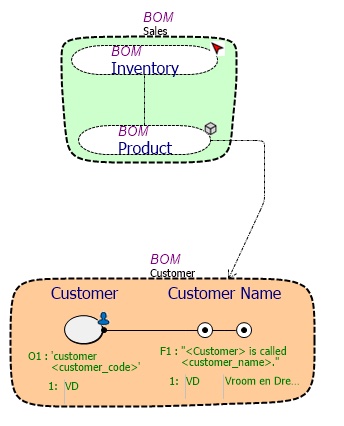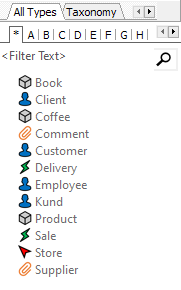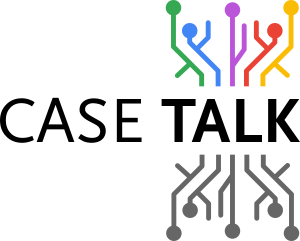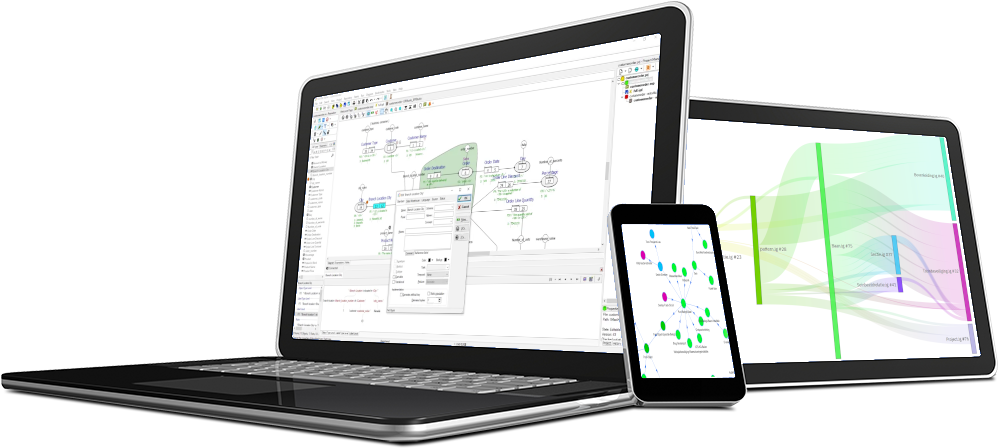CaseTalk partners HvA, HR and HU
CaseTalk partners with HvA, HR and HU building the centre for Responsible Applied AI
The Amsterdam, Rotterdam and Utrecht Universities of Applied Sciences have received a SPRONG grant from Regieorgaan-SIA, with which they - together with 24 partners from the field - can build an infrastructure for a powerful research group. A group that is regionally and nationally recognised as the centre for practice-based research in the field of Responsible Applied AI.
Congratulations!
Casetalk is part of the curriculum at several universities, high schools and in secondary education. Students learn the basics of FCO-IM using CaseTalk and often the final assignment is to make a model of an existing organization of their choice.
Entities from thin air
Ever wondered where your entities came from? Entities may exist in your source code, databases, business glossaries, and in your data models themselves?
Data Vault Coloring
The Ensemble Logical Model (ELM) is an enterprise-wide business model which, in an agile way, maps the business concepts within a given organization into an agile and adaptable model. ... The Ensemble Logical model is a backbone model containing the Core Business Concepts and the way these are related. The high level modeling of concepts in this approach is in need for a trickle down approach which further integrates the communication and their examples. FCO-IM is an excellent candidate for that. Previously we showed the icons which depict concept types such as Person, Location, Event, etc.
Concepts and Containers
The solid modeling method FCO-IM is great for bottom-up modeling, where every little detail is communicated and registered.
And yet, sometimes, we also need some support for top-down modeling. This would allow easy scoping while ignoring details that are needed at the end of the analysis. This high level scoping and registering of concepts and the ability to nest them in containers, is of great help in early stages of modeling and for high level information model views.
With CaseTalk version 12 we add the support for that. Below is a preview of a simple diagram mixing both top-down and bottom-up in a single model and diagram.

Ensemble Logical Modeling
The Ensemble Logical Modeling (ELM) is an enterprise-wide business model which, in an agile way, maps the business concepts within a given organization into an agile and adaptable model. ... The Ensemble Logical model is a backbone model containing the Core Business Concepts and the way these are related. The high level modeling of concepts in this approach is in need for a trickle down approach which further integrates the communication and their examples. FCO-IM is an excellent candidate for that. ELM has a number of artifacts, the first is the so called Core Business Concept List. With the new concepts in CaseTalk it has become very easy to enter these:

Temporal, Transitional and Localization Annotations
Temporal modeling is a hot topic in data warehouse and BI environments. The data vault approach or anchor modeling are an attempt to make those environments more manageable. From the information modeling perspective however, these are mostly technical in nature. Though the information model could capture those technical requirements, it would be an information model with an implementation in mind, and not simply capture the business communication. We would be modeling the data warehouse implementation itself and not the way the business communicates about their data.
This is a follow up to the initial article to be found here.
Bi-Weekly Ticket Newsletter
The valentine gift to our fans and users is an automated bi-weekly newsletter reporting all the updated tickets.


